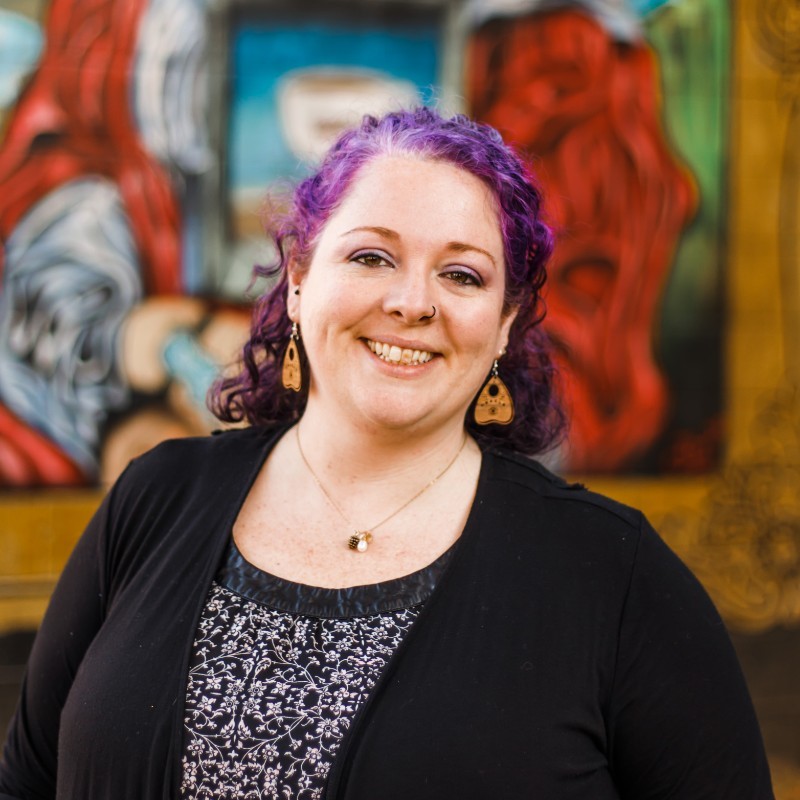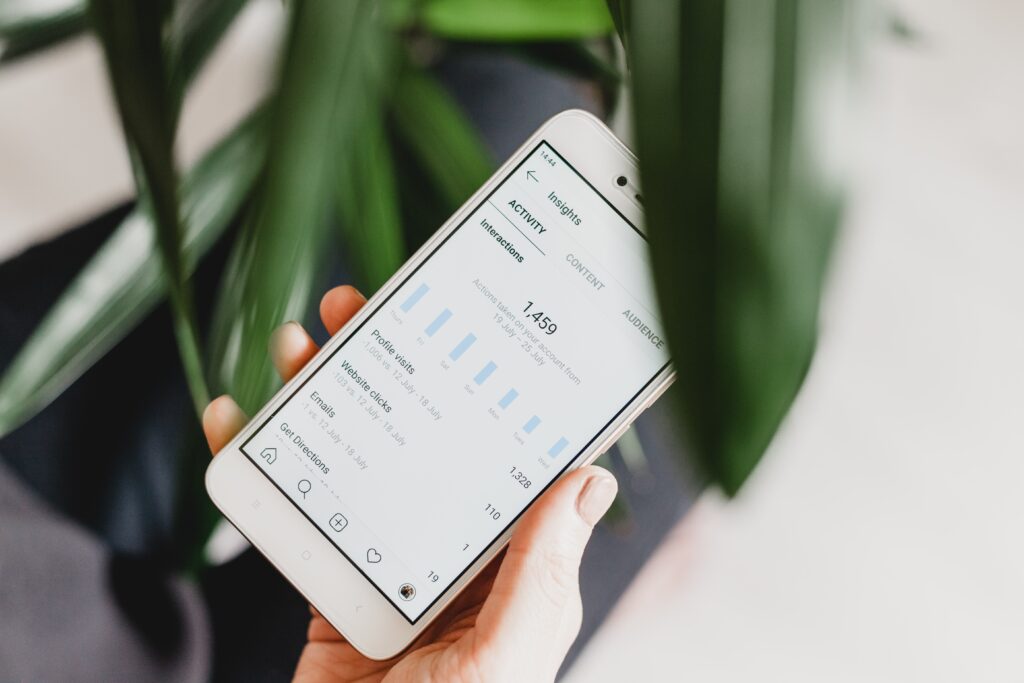
Avoid These 3 Facebook and Instagram Ad Mistakes

So, it goes with out saying that social media advertising is a large part of the marketing budget for many companies. As advertisers, it’s our responsibility to understand the audience we’re speaking to, including how much time they spend online and where they spend their time online. This allows us to understand how, when and where your business needs to show up online. If you’re trying to go it alone or you’re just starting out with paid ads, know that advertising on an ever-changing platform can be tricky. Whether you’ve been advertising on Facebook and Instagram for a while or if you’re new, we all make a few common mistakes. That is why we’re diving into the Top 3 Facebook and Instagram Ad Mistakes and how to avoid them.
Table of Contents:
- Value & Purpose of Facebook and Instagram Ads
- Mistake #1: Not Having a Clear Objective or Picking the Wrong One
- Mistake #2: Not Having a Clearly Defined Audience
- Mistake #3: Not Monitoring your Ads
Value & Purpose of Facebook and Instagram Ads
We live in a world where everything is personalized, tailored, and quick. A social media presence is a little checkmark that indicates to people that your brand is relevant and delivering content. Keep in mind that these platforms are targeted, ad-focused, and heavily personalized to their users.
User experience is number one. Meaning that users will only be retargeted with ads relevant to their interests and needs. This is why knowing your audience is so significant. If you’re still working to define your audience, we encourage you to read our recent article, Do You Really Know Your Audience, or Are You Just Guessing?
Social media sites are also pulling back the assumed reach of an organic post, and it is leading advertisers to put less pressure on organic social media marketing plans and focus more on their targeted paid advertising efforts related to social media.
Paid advertising is valuable for businesses because it allows you to target a specific audience. So whether you’re a business that wants to target an audience type that you have historically advertised to, an entirely new audience, or a bit of both, Facebook’s ad manager allows you to get as targeted as you need to reach your goals. These targeting options include having a custom audience, lookalike audiences, and business website owners.
Paid advertising is beneficial to both the business and the consumer. Companies can reach their ideal audience in a more targeted way, and they can track their ad performance, whether online or offline. By accessing your Facebook ad performance, businesses can see Facebook and Instagram ads’ value in reaching their business goals. The goal of paid media is to influence your audience, encourage users to share posts, and gain even more visibility.
For consumers, paid advertising is great because they’ll see relevant, personalized, and valuable advertising. They can then easily click on the business name and get more information. They can see other posts, the business’s phone number, email address, and website. Customers can even directly message the brand. This is completely different from what we could do with traditional paid advertising like Print Ads.
As marketers, keep in mind that these users still have a full feed of organic posts and that as advertisers, you’re competing with other businesses, friends, and family members for views.
The goal of a Facebook or Instagram ad is for users to click on your business page, follow or like it, engage with the content, and eventually go to your website and purchase your product. By having a robust organic and paid marketing strategy, you, the marketer, are putting your business in the best position for an engageable account and a higher return on investment.

Mistake #1: Not Having a Clear Objective or Picking the Wrong One
What are your goals? What are you expecting out of your ad campaign? If you don’t have a goal or tracking objectives, how will you measure whether or not your advertising performs well?
When creating social media ads, work to develop clear expectations for yourself, Instagram, and Facebook. Facebook’s campaign objectives are built on the backend and centered around the goal that you are providing it.
When creating social campaigns, ensure that you have a measurable objective and create a detailed strategy before investing any money. Having a clear idea of your objective helps develop the right approach depending on the goals you hope to achieve. For example, if your goal is engagement and you don’t outline that correctly, you may not see the results you’re looking for, and you will assume that your Facebook ads don’t work and you wasted money, but it might be your social plan that needs tweaking. Therefore, ensure that you clearly define your goals and what you want from a social media campaign.
Knowing your objectives at the start of your campaign will allow you to measure your results accurately and see if you’re getting your desired results. On the other hand, if you see you’re not getting what you were hoping for, you can change or parameters and adjust accordingly to avoid wasting marketing funds.
Common goals that marketers have can be:
- Increase engagement
- Increase sales/lead generation
- Increase brand awareness
So how do we develop goals and objectives for our Facebook and Instagram ads? Start by defining your goals as a group. If you have team members work together to determine your ad objectives. When discussing goals in a group setting with other people who understand your business, you can set realistic goals that your business can achieve.
If you’re a business of one, ask yourself, are your goals achievable with your funds for this campaign? Be honest. Change your goals, budget, or reevaluate your next step if the answer is no.
Next, create a plan. Your plan should be made with your goal in mind. Once you’ve set realistic and reachable goals, break down the steps your business needs to take to achieve those goals.
Afterward, set your business Key Performance Indicators (KPIs). Knowing your KPIs will help you compare and understand how your campaign is performing and eventually maximize the return on investment. Lastly, create objectives that meet your current needs – it’s important to set objectives that meet your goals and the business’s current (keyword: current) needs.
The goal of goal setting is to set the right ones. Setting the right goals requires initial reflection and thought.
Mistake #2: Not Having a Clearly Defined Audience
There are millions of users on Facebook and Instagram, so there’s a high likelihood that your content could get lost.
When advertising on social media, you enter into a level of competition. When building a social media audience and creating social media ads to get your content in front of customers, you are competing against other businesses and that person’s life – their family members and friends who also use that platform.
This is why it’s so important to target your audience correctly. The chances of getting lost in the number of ads and content being produced are high, but by targeting the correct audience, you’re minimizing that possibility.
To avoid getting lost in the crowd, you need to start by creating engaging, aesthetically appealing, and actionable content. Then, you need to optimize your ads and target them appropriately. It’s a waste of effort and money if you’re creating ads and not generating any leads. Thankfully, Facebook offers so many different targeting options, and you can really focus your campaigns with incredibly unique targeting options like demographics, interests, and behaviors. You can include and exclude these targets, create “either,” “or,” and “and” statements, and utilize the available choices to ensure you’re reaching the right audience.
Here are some key points when you’re defining your target audience:
- Location: This is an excellent first layer to targeting. Ensure you’re targeting a specific area. Whether it be a country, state, city, or zip code focusing on a particular area will help you focus your marketing efforts.
- Demographic: Demographics include marital status, age, sex, net worth, household income, and so much more. This can focus your targeting and acts as a second layer after your locational targeting.
- Interests: The next layer in targeting is making sure your audience is interested in what you’re creating. If you’re advertising clothing, you do not want to spend your advertising budget targeting people who don’t like shopping. Make sure that you identify the interests of your audience.
- Engagement: This is a great way to ensure your content reaches users interested in your product. Setting your ads up as “engagement” within Facebook means that people who have been on your profile, liked, commented, or followed you on social media will be served those ads.
- Behaviors: Finally, Facebook has a targeting tool called the Facebook Pixel. This pixel helps track user behavior and display ads. Facebook Pixels are a way to target your ads to get in front of audiences who look at your content.
By knowing your audience and creating custom audiences for your Facebook and Instagram ads, you can target and retarget more effectively instead of throwing out a wide net and hoping to gain some interest. With a clearly defined audience, you can ensure you’re delivering ads to people who have been to your site but may not have purchased anything. In addition, it’s a friendly reminder for the customer that you exist and your product is still available.
A big trap advertisers fall into is creating too small or too large a targeting list. When creating ads on Facebook, ensure that you set your audience size. Rather than reaching millions of people, start by selecting a more realistic number that would be more likely to convert and have engagement. Keep in mind that there’s a chance if you create an audience that’s too small – Facebook may not deliver your ad. By taking the time to develop the right audience, you will be able to increase your ROI and be more intentional with that investment.
Two Trees PPC Tip #1: When creating ad campaigns, consider making a lookalike audience. With lookalike audiences, you can reach a similar type of audience based on the specific behaviors they exhibit.

Two Trees PPC Tip #2: We recommend using the Facebook Ads Manager for your Instagram posts. If you opt to use the Instagram “promote” button, you lose a lot of the targeting capabilities you have available to you within the Facebook ads manager.
Mistake #3: Not Monitoring your Ads
Our final mistake is the common assumption that Facebook and Instagram ads are “set it and forget it” campaigns. They are not. If you create a campaign and go weeks without checking on it, you could miss out on a lot of information – most notably, whether or not your ads are performing well. As advertisers, we need to ensure that we’re analyzing the performance of our ads daily.
Continue checking in on your campaigns because people change, and their needs change. What worked in a previous campaign may not work now, and that’s OK. Things are constantly changing, and so are the needs and values of the people we target. Also, we want to make sure our audience isn’t getting the same ad every day. If they see the same content, it can be exhausting for the customer, and they could lose interest.
If you don’t monitor your advertising, you won’t be able to see if you are meeting the goals and objectives you set forth or if you’re having any technical issues. So make sure you’re taking the time out of your week to monitor your ads to avoid technical problems (like ads shutting off) or targeting issues.
By frequently reviewing your ad campaigns, you can get ahead of any changes and avoid unnecessary ad spending.
To achieve ad success on Facebook and Instagram, you need to take the time to do your research. Everyone mistakes on a constantly changing platform, but by outlining your goals, researching your audience, and revisiting your campaigns, you can get ahead of any changes and save your time, effort, and marketing dollars.
Are you trying out or seeing success with Facebook or Instagram ads? Let us know what you’re doing and join in the conversation over on LinkedIn. We’d love to cheer you along in your paid advertising journey!


